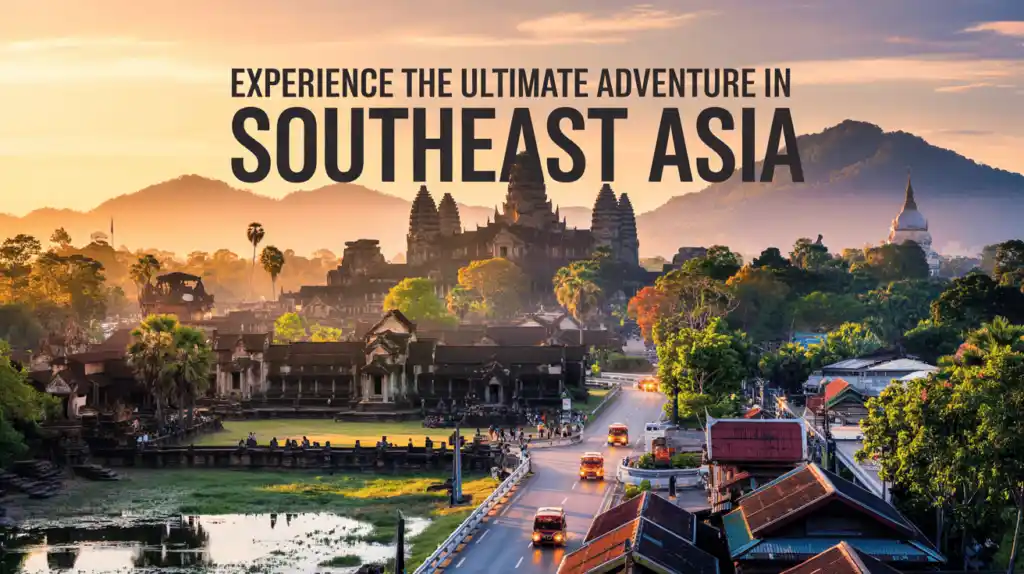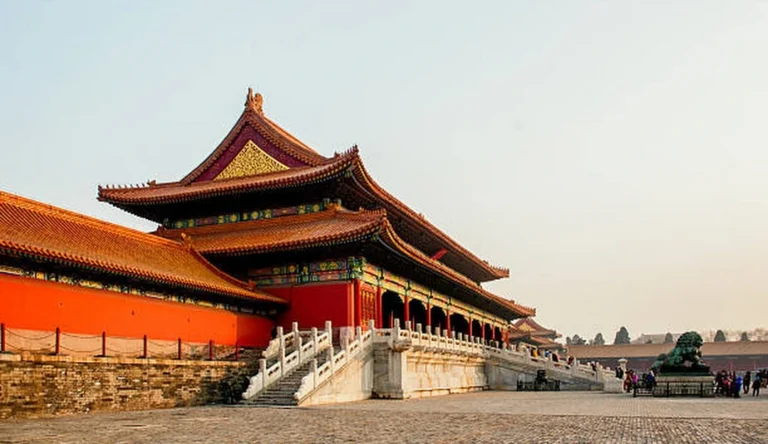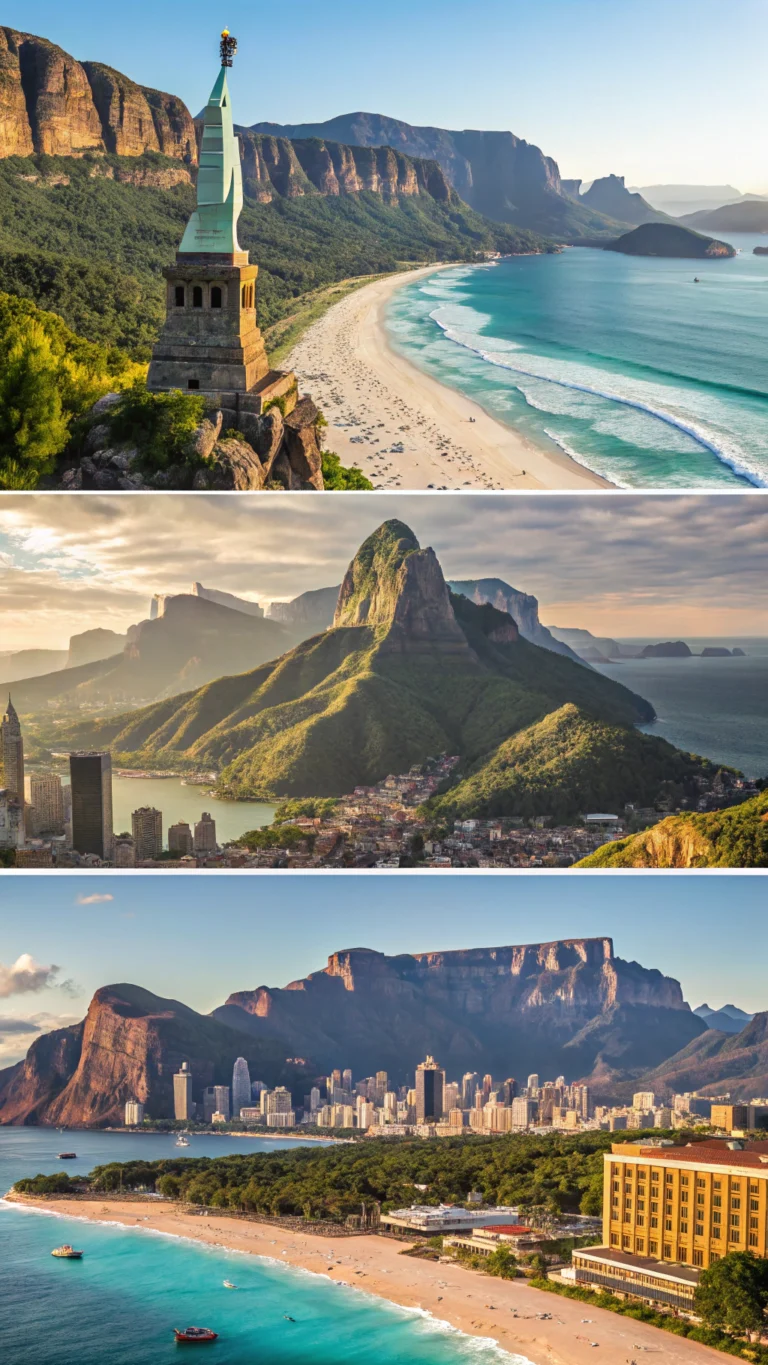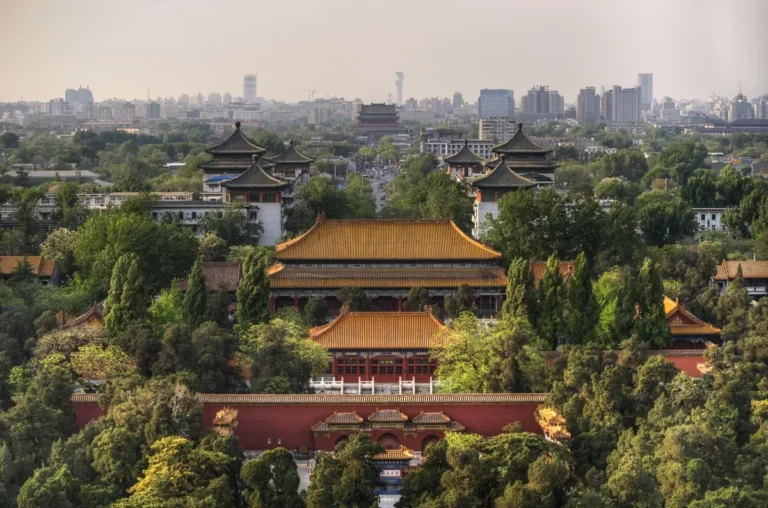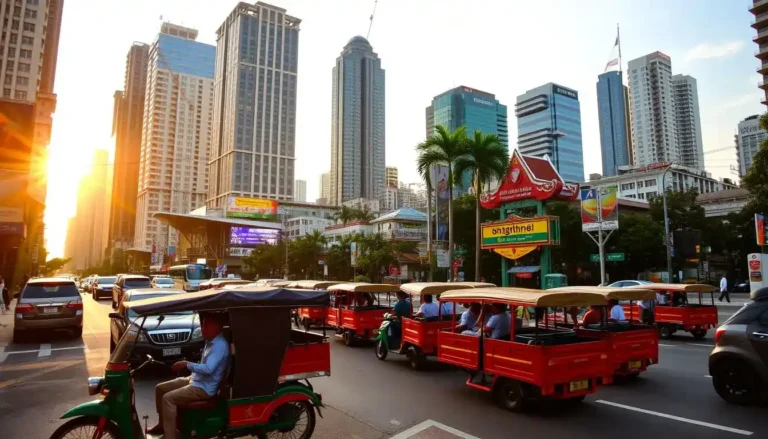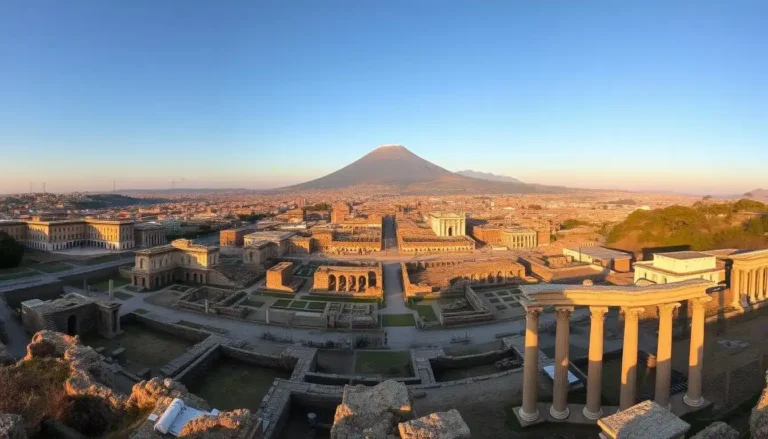Ultimate Backpacking Guide for Southeast Asia
Experience the Ultimate Adventure in Southeast Asia
Southeast Asia invites backpackers with its vibrant cities, breathtaking landscapes, and deep cultural roots. This captivating region promises unforgettable journeys filled with history, beauty, and adventure.
From the lively streets of Bangkok to the tranquil beaches of Bali, Southeast Asia presents a wide variety of experiences for every type of traveler. Whether you’re chasing trekking trails, discovering rich culinary traditions, or seeking a peaceful escape, this guide is your gateway to the best that Southeast Asia has to offer.
Ultimate Backpacking Guide for Southeast Asia
With valuable backpacking tips and insights into the region’s hidden gems, you’ll be well-equipped to make the most of your journey.
Key Takeaways
- Essential backpacking tips for Southeast Asia
- Top destinations to visit in the region
- Cultural insights for a more immersive experience
- Budget-friendly travel options
- Safety tips for solo travelers
Planning Your Southeast Asia Backpacking Adventure
Embarking on a backpacking trip through Southeast Asia is an exciting journey filled with cultural discovery, natural wonders, and unforgettable experiences. However, proper planning is essential to make the most of your adventure. From navigating different countries and climates to budgeting and packing wisely, preparing in advance will ensure a smoother, more enjoyable trip across this diverse and captivating region.
Best Time to Visit Southeast Asia
The best time to visit Southeast Asia varies by country. Generally, the dry season, which spans from November to March, is considered the best time to explore most countries in the region. For instance, Thailand and Cambodia are best visited during this period, while Vietnam’s weather is more favorable from February to May. Researching the specific climate conditions of your destinations will help you pack accordingly and avoid unfavorable weather.
Visa Requirements for Different Countries
Understanding visa requirements is a critical aspect of planning your trip. Different countries in Southeast Asia have varying visa regulations. For example, Thailand offers a visa-on-arrival for many nationalities, while Vietnam requires an e-visa or visa on arrival for most travelers. It’s essential to check the latest visa requirements for each country on your itinerary to avoid any last-minute hassles.
Creating a Flexible Itinerary
A flexible itinerary is key to a successful backpacking trip. While it’s good to have a plan, leaving some room for spontaneity can lead to unexpected adventures. Consider prioritizing your must-visit destinations and allocating your time accordingly. You can use travel apps or journals to plan and adjust your itinerary as needed.
The Ultimate Backpacking Guide for Southeast Asia: Countries to Explore
Backpacking through Southeast Asia offers an unparalleled travel experience, with its rich history, vibrant cultures, and breathtaking natural beauty. This region is a mosaic of countries, each with its unique charm and attractions.
Thailand: The Perfect Starting Point
Thailand is often the starting point for many backpackers due to its welcoming culture, delicious cuisine, and bustling cities like Bangkok. Visitors should respect local customs, especially when visiting temples, by dressing modestly. Thailand’s islands, such as Phuket and Koh Samui, offer beautiful beaches and vibrant nightlife.
Vietnam: From North to South
Vietnam is a country that seamlessly blends traditional and modern elements. From the bustling streets of Hanoi to the historic city of Hoi An and the vibrant energy of Ho Chi Minh City, Vietnam has something for every traveler. Cultural etiquette is crucial here, particularly in rural areas where traditional values are deeply ingrained.
Cambodia and Its Ancient Wonders
Cambodia is home to the magnificent Angkor Wat, a testament to the region’s rich history. Visitors can explore the ancient temples and learn about the local culture. Respecting the local customs and dressing appropriately when visiting these sites is essential.
Laos, Indonesia, and Malaysia Highlights
Laos offers a serene backpacking experience with its laid-back atmosphere and stunning natural beauty. Indonesia, with islands like Bali, is known for its beautiful beaches and vibrant culture. Malaysia, with its mix of Malay, Chinese, and Indian cultures, offers a diverse cultural experience. Understanding cultural etiquette in these countries can greatly enhance your travel experience.
Each of these countries in Southeast Asia provides a unique backpacking experience, rich in cultural immersion and natural beauty. By respecting local customs and being mindful of cultural etiquette, travelers can have a more meaningful and enjoyable journey through Southeast Asia.
Transportation Options Across the Region
Navigating Southeast Asia is an adventure in itself, with a myriad of transportation options available to backpackers. Understanding these options is crucial for making the most out of your journey while keeping costs in check.
Flying Between Countries
Southeast Asia is home to numerous budget airlines, making flying between countries both affordable and convenient. Airlines like AirAsia and VietJet offer competitive prices, with fares sometimes being as low as $10-$20 for short flights. Booking in advance is key to securing the best deals.
Buses and Trains for Overland Travel
For a more scenic route, buses and trains are excellent options for overland travel. Companies like Green Bus in Thailand and Vietnam’s Reunification Express train offer comfortable and relatively affordable travel. These modes of transport also provide a unique glimpse into local life.
Motorbike Rentals and Safety
Renting a motorbike is a popular option for those who prefer more freedom in their travels. However, it’s crucial to consider safety first. Always wear a helmet, and be aware of local traffic laws. Many rental shops offer insurance options, which can provide peace of mind.
Boats and Island Hopping
No trip to Southeast Asia is complete without island hopping. Ferries and speedboats are readily available for this purpose. Popular routes include traveling between islands in Thailand’s Koh Samui archipelago or Indonesia’s Gili Islands. Be sure to choose reputable operators to ensure safety.
By understanding and utilizing these transportation options, backpackers can navigate Southeast Asia efficiently, making the most of their adventure while staying within budget.
Finding Accommodation on a Backpacker’s Budget
Affordable accommodation is a cornerstone of backpacking in Southeast Asia, allowing travelers to explore without financial stress. The region is teeming with options that cater to all budgets, ensuring that backpackers can find a place to rest that suits their financial plans.
Budget Accommodation in Southeast Asia
Hostels and Guesthouses
When it comes to budget accommodation in Southeast Asia, hostels and guesthouses are the go-to options for backpackers. More than just a place to sleep, hostels create a social environment where travelers can connect, share tips, and join organized events or tours. Dormitory beds typically range from $5 to $10 per night, making them ideal for those traveling on a tight budget.
Guesthouses, on the other hand, offer a quieter and more personal experience. Often family-run, they provide a glimpse into local life and culture, with the added comfort of private rooms at affordable rates. Whether you’re looking for a lively atmosphere or a peaceful stay, Southeast Asia has budget-friendly options to suit every travel style.
Homestays and Cultural Experiences
For a truly immersive experience, homestays are an excellent choice. They allow travelers to live with local families, sharing meals and stories. This not only deepens cultural understanding but also supports local economies directly. Homestays can be arranged through local agencies or platforms like Homestay.com.
“Staying with a local family was a highlight of my trip. It gave me insights into daily life and traditions that I wouldn’t have experienced otherwise.”
Booking Platforms and Walk-in Strategies
Booking in advance can secure the best rates, especially during peak travel seasons. Platforms like Booking.com and Agoda.com offer a wide selection of accommodations with reviews to help make informed decisions. For those who prefer spontaneity, walking in and negotiating directly with hostel or guesthouse owners can sometimes yield better deals.
- Research and book in advance for the best rates.
- Consider staying in less touristy areas for cheaper options.
- Negotiate directly for potential discounts, especially for longer stays.
Budgeting for Your Southeast Asian Journey
Embarking on a backpacking adventure through Southeast Asia requires careful financial planning to ensure a stress-free journey. Understanding the costs involved can help you make the most of your trip.
Country-by-Country Cost Breakdown
Southeast Asia is a diverse region with varying costs. For instance, Thailand is generally more affordable than Singapore. Here’s a rough breakdown:
- In Thailand, you can expect to pay around $3-5 for a meal.
- In Vietnam, accommodation can cost between $5-15 per night for a budget-friendly option.
- Cambodia offers affordable tours, with prices starting from $20-30 per person.
Understanding these costs can help you plan your itinerary more effectively.
Daily Budget Considerations
When backpacking, it’s essential to have a daily budget in mind. A daily budget of $30-50 per day can provide a comfortable experience in most Southeast Asian countries. This budget should cover:
- Accommodation
- Food
- Transportation
- Activities and sightseeing
Adjusting your daily budget according to the local cost of living can help you stay within your means.
Money-Saving Tips and Tricks
To save money, consider the following backpacking tips:
- Opt for local street food instead of dining at tourist restaurants.
- Use public transportation or budget-friendly transport options like buses and trains.
- Avoid exchanging money at airports or tourist areas, where rates are often unfavorable.
By being mindful of your expenses and adopting cost-saving strategies, you can enjoy a fulfilling budget travel experience in Southeast Asia.
What to Pack for Southeast Asia
Southeast Asia’s diverse climates and cultures require a thoughtful packing strategy. As you prepare for your adventure, it’s essential to consider the essentials that will make your journey comfortable and enjoyable.
Clothing and Footwear Essentials
When it comes to clothing, lightweight and breathable fabrics are a must. The tropical climate means you’ll want to prioritize comfort and versatility. Consider packing:
- Moisture-wicking tops and leggings
- Quick-drying shorts and pants
- Comfortable sandals and hiking boots
- A lightweight rain jacket or poncho
These items will help you navigate the region’s varied weather conditions and activities.
Health and Hygiene Items
Maintaining personal hygiene is crucial, especially when traveling. Be sure to pack:
- Toothbrush, toothpaste, and dental floss
- Deodorant, shampoo, conditioner, and body wash
- Insect repellent and sunscreen
- Any personal medications and a first-aid kit
These essentials will help keep you healthy and comfortable throughout your journey.
packing essentials for Southeast Asia
Electronics and Accessories
In today’s digital age, staying connected is vital. Don’t forget to pack:
- A portable power bank and charging cables
- A universal power adapter for Southeast Asia
- A waterproof phone case and camera
These will keep your devices charged and protected.
Packing Light Philosophy
The key to a stress-free backpacking experience is packing light. Aim for a balanced approach that includes the essentials without overloading your backpack. Remember, you can always do laundry or purchase items along the way.
By focusing on the essentials and adopting a pack light mindset, you’ll be well-prepared for the adventures that await you in Southeast Asia.
Navigating Cultural Differences and Etiquette
Southeast Asia is a melting pot of cultures, and understanding the local etiquette is crucial for a respectful and enjoyable trip. As travelers venture into this vibrant region, being mindful of cultural norms can significantly enhance their experience.
Temple Etiquette and Dress Codes
Visiting temples is a highlight of traveling in Southeast Asia. To show respect, it’s essential to dress modestly. This typically means covering your shoulders and knees. In some temples, you may be required to remove your shoes before entering. Understanding these simple rules can make a significant difference in how you’re perceived by the local community.
Bargaining in Markets
Bargaining is an integral part of shopping in Southeast Asian markets. It’s not just about negotiating prices; it’s a cultural exchange. Start by offering a lower price than you’re willing to pay, and be prepared to negotiate. A smile and a friendly demeanor can go a long way. Remember, the goal is to reach a mutually agreeable price, not to win at all costs.
Respecting Local Customs
Respecting local customs is vital. For example, in many Southeast Asian cultures, the head is considered the most sacred part of the body, so touching someone’s head can be seen as highly disrespectful. Similarly, public displays of affection are generally frowned upon. Being aware of these customs can help you avoid unintentionally offending locals.
| Cultural Practice | Description | Tip |
| Temple Visits | Dress modestly, remove shoes when required | Cover shoulders and knees |
| Market Bargaining | Negotiate prices with a smile | Start with a lower offer |
| Public Behavior | Avoid public displays of affection | Be mindful of local norms |
Must-Try Foods and Culinary Experiences
From spicy street food to elaborate feasts, Southeast Asia’s culinary landscape is as diverse as it is delicious. The region is renowned for its street food, with dishes that are both affordable and mouth-watering.
Street Food Safety
While street food is a highlight, safety is paramount. Opt for stalls or markets that are busy and have a high turnover of food, ensuring that the dishes are freshly prepared. It’s also wise to observe how the food is handled and cooked.
Iconic Dishes by Country
Each Southeast Asian country boasts its own iconic dishes. In Thailand, try Pad Thai and Tom Yum soup. Vietnam is famous for Pho and Banh Mi. In Cambodia, Fish Amok is a must-try, while in Laos, Larb (meat salad) is a local favorite. Indonesia’s Nasi Goreng (fried rice) and Malaysia’s Laksa are also not to be missed.
Vegetarian and Dietary Restriction Options
While meat is a staple in many Southeast Asian dishes, there are plenty of vegetarian options available, especially in Buddhist-influenced countries like Thailand and Cambodia. Don’t hesitate to ask for modifications or look for dedicated vegetarian stalls.
Health and Safety While Backpacking
Southeast Asia’s diverse environments and cultures demand a thoughtful approach to health and safety for backpackers.
Vaccinations and Medical Preparation
Before embarking on your journey, consult your doctor or a travel clinic to determine the necessary vaccinations and medications for the regions you plan to visit. Southeast Asia poses various health risks, including dengue fever, Zika virus, and hepatitis A.
Vaccination recommendations: Hepatitis A, typhoid, and rabies vaccinations are commonly advised. Ensure you’re up-to-date on all routine vaccinations.
Common Scams and How to Avoid Them
Be aware of common scams targeting tourists, such as tuk-tuk scams, gem scams, and credit card scams. Always use reputable services, keep your belongings secure, and be cautious when dealing with overly friendly strangers.
- Use licensed tuk-tuks or taxis.
- Avoid carrying large amounts of cash.
- Keep your valuables close and secure.
Travel Insurance Importance and Solo Traveler Safety Tips
Travel insurance is crucial for covering unexpected medical or travel-related expenses. For solo travelers, additional safety precautions include staying informed about local conditions, keeping in touch with family and friends back home, and trusting your instincts.
| Safety Tip | Description |
| Stay Informed | Register with your government’s travel advisory service and stay updated on local news. |
| Keep in Touch | Regularly update family and friends on your itinerary and whereabouts. |
| Trust Your Instincts | If a situation feels unsafe, remove yourself from it. |
By being prepared and aware, you can minimize risks and enjoy a safe and healthy backpacking experience in Southeast Asia.
Conclusion
As you’ve discovered through this ultimate backpacking guide, Southeast Asia is a treasure trove of diverse cultures, breathtaking landscapes, and unforgettable experiences. From the bustling streets of Thailand to the ancient ruins of Cambodia, and from the idyllic beaches of Indonesia to the vibrant cities of Vietnam, this region has something for every kind of traveler.
With careful planning, an open mind, and the right backpacking tips, you’re ready to embark on an adventure that will leave you with lifelong memories. Whether you’re a seasoned traveler or just starting out, Southeast Asia’s warm hospitality, delicious cuisine, and rich history make it an ideal destination for backpackers.
As you set out on your Southeast Asia travel journey, remember to stay flexible, respect local customs, and take time to soak in the unique atmosphere of each country. With this guide, you’re well-equipped to navigate the region, make the most of your time, and enjoy an unforgettable backpacking experience.
Frequently Asked Questions: Backpacking in Southeast Asia
1. What is the best time to visit Southeast Asia?
The best time to visit varies by country, but the dry season from November to February is generally ideal. Countries like Thailand, Vietnam, Cambodia, and Laos offer pleasant weather during these months.
2. Do I need a visa to travel to Southeast Asia?
Visa requirements depend on your nationality and the country you’re visiting. Some countries, like Thailand and Cambodia, offer visa-free entry or visa on arrival, while others, such as Vietnam, may require a pre-arranged visa. Always check entry rules before traveling.
3. How do I get around Southeast Asia?
Getting around is easy and affordable thanks to budget airlines, buses, trains, ferries, and motorbike rentals. Choose the mode of transport that fits your itinerary and budget.
4. What are the must-try foods in Southeast Asia?
Don’t miss pad thai in Thailand, banh mi in Vietnam, nasi goreng in Indonesia, and laksa in Malaysia. Street food is a cultural experience, but follow hygiene tips to stay safe.
5. What vaccinations do I need for Southeast Asia?
Recommended vaccines include hepatitis A and B, typhoid, tetanus, and rabies (in some cases). Visit a travel health clinic before your trip for personalized advice.
6. How can I stay safe while backpacking in Southeast Asia?
Stay aware of your surroundings, avoid carrying valuables, and don’t travel alone at night. Use reputable transport services, beware of scams, and keep your accommodation secure.
7. What are the best accommodation options for backpackers?
Affordable options include hostels, guesthouses, homestays, and even budget hotels. Booking in advance or walking in for deals are both common strategies.
8. How much money should I budget for a trip to Southeast Asia?
You can travel on $20–$40 per day depending on your lifestyle and the country. Thailand and Vietnam are budget-friendly, while Singapore and parts of Malaysia are slightly more expensive.
9. What are some essential items to pack for Southeast Asia?
Pack lightweight clothes, comfortable shoes, travel-sized toiletries, power adapters, bug spray, and a small daypack. Don’t forget travel insurance and a copy of your documents.
10. Can I drink tap water in Southeast Asia?
In most countries, tap water is not safe to drink. Stick to bottled or filtered water, and avoid ice or uncooked produce unless you’re sure it’s been cleaned safely.
11. How can I respect local customs and culture?
Show respect by dressing modestly, removing shoes in temples and homes, and learning basic local phrases. Being polite and culturally aware goes a long way in Southeast Asia.

